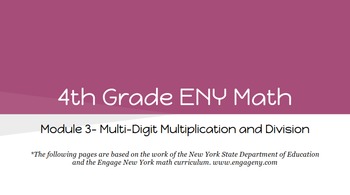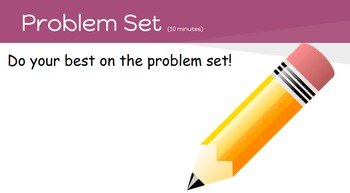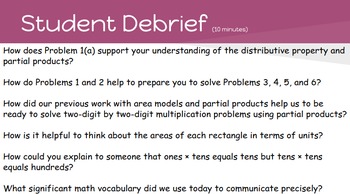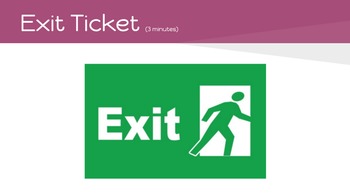4th Grade Engage NY Math Module 3 (Bundle)
Resources from Rendezvous
69 Followers
Grade Levels
4th
Subjects
Resource Type
Standards
CCSS4.MD.A.3
CCSS4.NBT.B.5
CCSS4.NBT.B.6
CCSS4.OA.A.1
CCSS4.OA.A.2
Formats Included
- Zip
Pages
2,661 pages
Resources from Rendezvous
69 Followers
Description
4th Grade Engage NY Math Module 3 (Bundle) includes pdf presentations of each of the lessons for Topics A - H in Engage New York Math/ Eureka Math Grade 4. There are 38 lessons and each lesson includes slides for the fluency practice, application problem, concept development, problem set, student debrief and exit ticket. All slides are based on the teacher pages.
Total Pages
2,661 pages
Answer Key
N/A
Teaching Duration
N/A
Report this resource to TPT
Reported resources will be reviewed by our team. Report this resource to let us know if this resource violates TPT’s content guidelines.
Standards
to see state-specific standards (only available in the US).
CCSS4.MD.A.3
Apply the area and perimeter formulas for rectangles in real world and mathematical problems. For example, find the width of a rectangular room given the area of the flooring and the length, by viewing the area formula as a multiplication equation with an unknown factor.
CCSS4.NBT.B.5
Multiply a whole number of up to four digits by a one-digit whole number, and multiply two two-digit numbers, using strategies based on place value and the properties of operations. Illustrate and explain the calculation by using equations, rectangular arrays, and/or area models.
CCSS4.NBT.B.6
Find whole-number quotients and remainders with up to four-digit dividends and one-digit divisors, using strategies based on place value, the properties of operations, and/or the relationship between multiplication and division. Illustrate and explain the calculation by using equations, rectangular arrays, and/or area models.
CCSS4.OA.A.1
Interpret a multiplication equation as a comparison, e.g., interpret 35 = 5 × 7 as a statement that 35 is 5 times as many as 7 and 7 times as many as 5. Represent verbal statements of multiplicative comparisons as multiplication equations.
CCSS4.OA.A.2
Multiply or divide to solve word problems involving multiplicative comparison, e.g., by using drawings and equations with a symbol for the unknown number to represent the problem, distinguishing multiplicative comparison from additive comparison.





